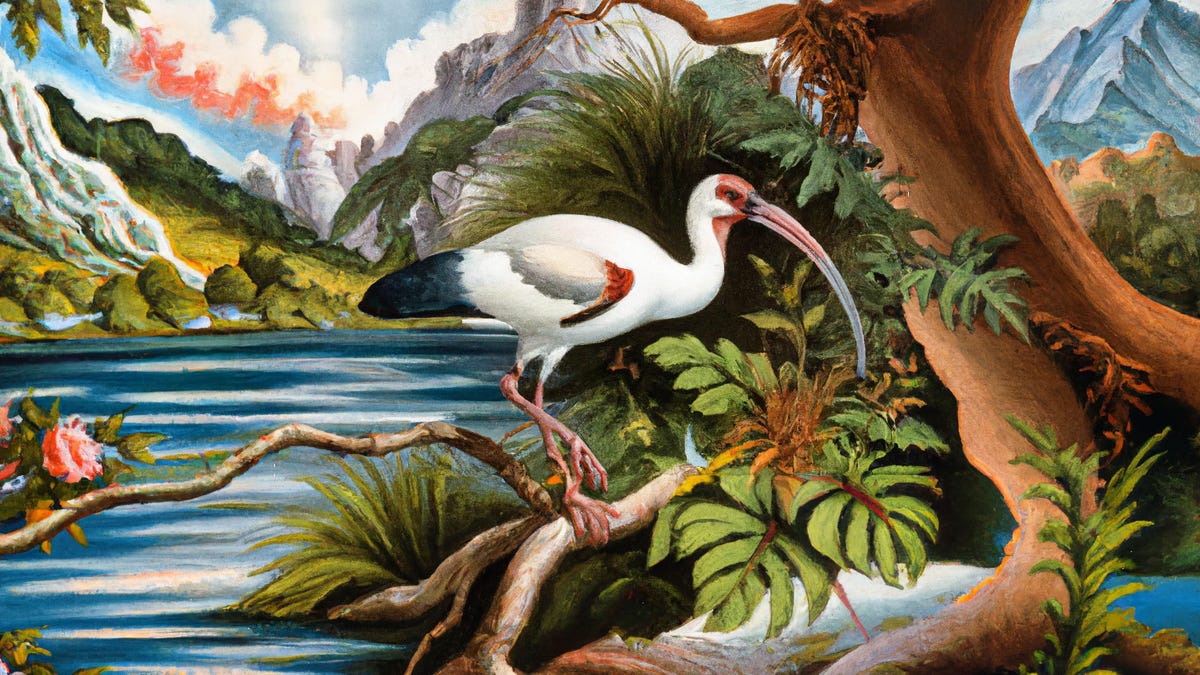You Now Can Tell DALL-E's AI to Dream Up Bigger Gobsmacking Images
The AI system generates images based on text prompts like "portrait of a blue alien that is singing opera."

OpenAI's DALL-E AI system now can expand images, for example enlarging this rendering of an ibis.
DALL-E, OpenAI's online service that uses artificial intelligence to generate images from text you type in, now can make bigger images for more creative noodling.
When DALL-E first arrived in April, it could turn a text prompt like "portrait of a blue alien that is singing opera," "3D rendering of a bouldering wall made of Swiss cheese" or "steampunk elephant" into images measuring 1024x1024 pixels. On Wednesday, the company added a new feature called outpainting that lets you extend the borders of the image. The expanded image is based on the text prompt and the existing imagery, said OpenAI engineer David Schnurr.
DALL-E users "wanted different aspect ratios or just wanted to be able to like take a concept that was produced and expand it into a larger image," Schnurr said. Processing power limits means DALL-E can only expand existing imagery, not generate a higher-resolution image to start with, he added.
DALL-E, whose name is a mashup of Pixar's WALL-E robot and surrealist painter Salvador Dalí, is a remarkable illustration of what's possible with AI technology today. OpenAI trained its system on 650 million images, each labeled with text. It's able to blend elements to create interpretations of your text prompt.
The service is free for generating up to 60 images per month, but you have to sign up and get through a waiting list to use it. More than 1 million people have signed up for DALL-E, said product manager Joanne Jang.
Judging by all the DALL-E tweets, people enjoy noodling around with the AI system to create fanciful images. But there are serious uses, too, like creating storyboards for movies, illustrating children's books and exploring concept art for videogames, Jang said.

